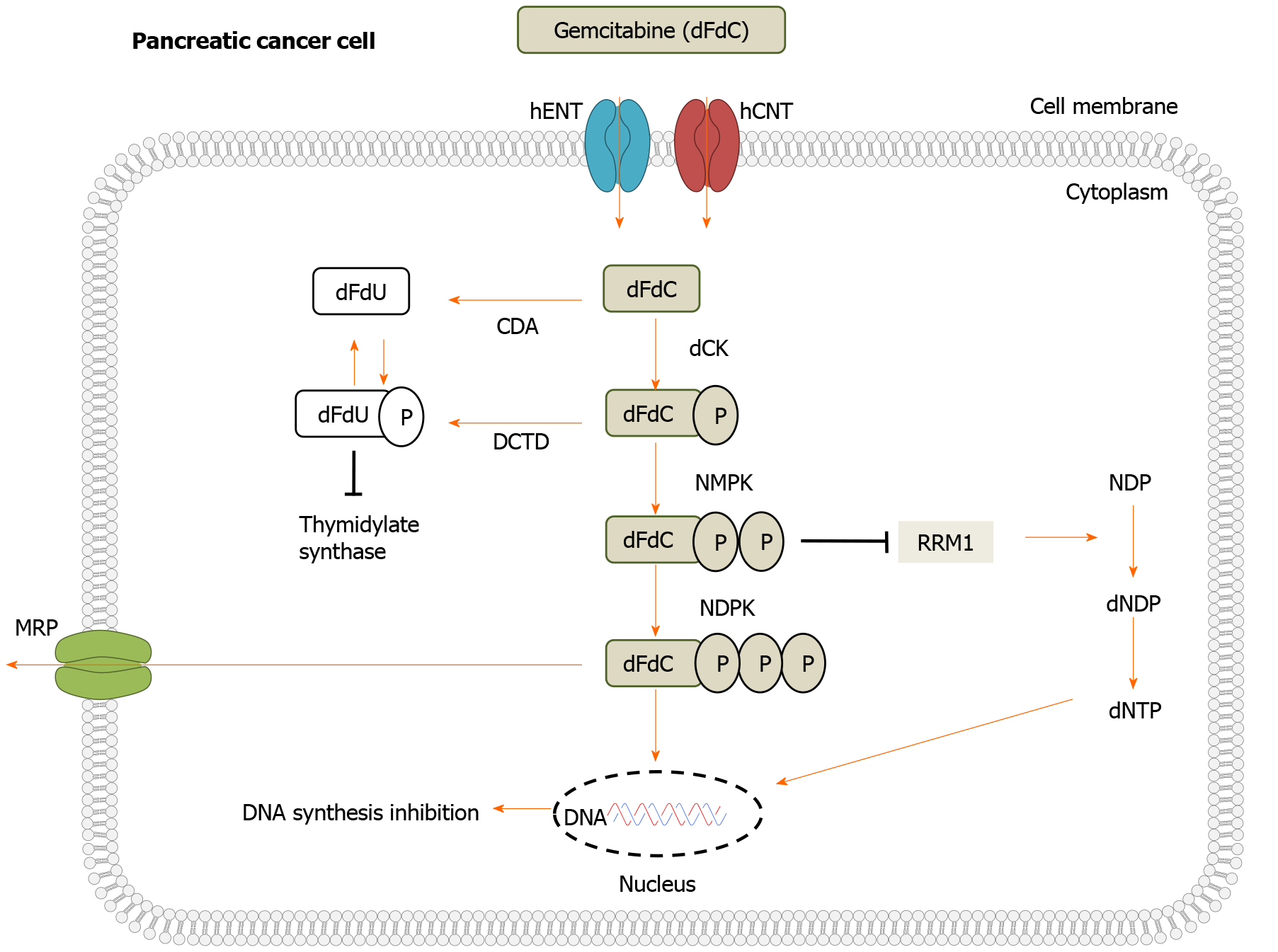Copyright
©The Author(s) 2021.
World J Gastroenterol. Oct 28, 2021; 27(40): 6844-6860
Published online Oct 28, 2021. doi: 10.3748/wjg.v27.i40.6844
Published online Oct 28, 2021. doi: 10.3748/wjg.v27.i40.6844
Figure 2 Schematic representation of Gemcitabine transport, metabolism, intracellular activation, and deactivation.
Gemcitabine (dFdC) is transported into the cell by nucleoside transporters: human equilibrative nucleoside transporter (hENT) human concentrative nucleoside transporter (hCNT) and is then catalysed by deoxycytidine kinase (dCK), which results in gemcitabine monophosphate (dFdCMP). It is then phosphorylated by nucleotide monophosphate kinase (NMPK) to gemcitabine diphosphate (dFdCDP). Finally, it is phosphorylated into gemcitabine triphosphate (dFdCTP) by nucleoside-diphosphate kinase (NDPK). Once metabolism is completed, gemcitabine enters the DNA resulting in the inhibition of DNA repair and replication. Gemcitabine or its phosphorylated metabolites are finally exported into the extracellular matrix by multidrug resistance protein 5 (MRP5)[22,26,27,41,69]. RRM1: Ribonucleotide reductase; CDA: Cytidine deaminase; DCTD: Deoxycytidylate deaminase; NDP: Nucleotide diphosphate.
- Citation: Carter CJ, Mekkawy AH, Morris DL. Role of human nucleoside transporters in pancreatic cancer and chemoresistance. World J Gastroenterol 2021; 27(40): 6844-6860
- URL: https://www.wjgnet.com/1007-9327/full/v27/i40/6844.htm
- DOI: https://dx.doi.org/10.3748/wjg.v27.i40.6844









